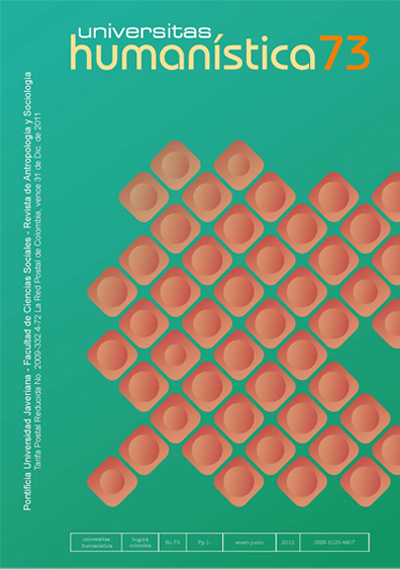Resumen
Con el propósito de examinar la representación social sobre la población de América,se exploró el discurso expresado en cinco manuales escolares de geografía de América,publicados en Colombia entre 1970 y 1990. Se usaron herramientas propuestaspor Van Dijk (2008) y Wodak (2003) para estudiar el discurso ideológico de identidad delos grupos sociales, mediante el seguimiento a la representación positiva del “nosotros”y negativa de los “otros”. Se encontró que la gente de América se representa mediante laidea de raza, en un esquema clasificatorio que ubica a la categoría blanco en la escalasuperior, en oposición a indio y negro, y la ideología del desarrollo, en la que se fomentauna polarización semántica entre América Latina y América Anglosajona.Palabras clave: manuales escolares, América, representación de la población 
La revista Universitas Humanística se encuentra registrada bajo la licencia Creative Commons Reconocimiento 4.0 Internacional. Por lo tanto, esta obra se puede reproducir, distribuir y comunicar públicamente en formato digital, siempre que se reconozca el nombre de los autores y a la Pontificia Universidad Javeriana. Se permite citar, adaptar, transformar, autoarchivar, republicar y crear a partir del material, para cualquier finalidad (incluso comercial), siempre que se reconozca adecuadamente la autoría, se proporcione un enlace a la obra original y se indique si se han realizado cambios. La Pontificia Universidad Javeriana no retiene los derechos sobre las obras publicadas y los contenidos son responsabilidad exclusiva de los autores, quienes conservan sus derechos morales, intelectuales, de privacidad y publicidad.
El aval sobre la intervención de la obra (revisión, corrección de estilo, traducción, diagramación) y su posterior divulgación se otorga mediante una licencia de uso y no a través de una cesión de derechos, lo que representa que la revista y la Pontificia Universidad Javeriana se eximen de cualquier responsabilidad que se pueda derivar de una mala práctica ética por parte de los autores. En consecuencia de la protección brindada por la licencia de uso, la revista no se encuentra en la obligación de publicar retractaciones o modificar la información ya publicada, a no ser que la errata surja del proceso de gestión editorial. La publicación de contenidos en esta revista no representa regalías para los contribuyentes.


